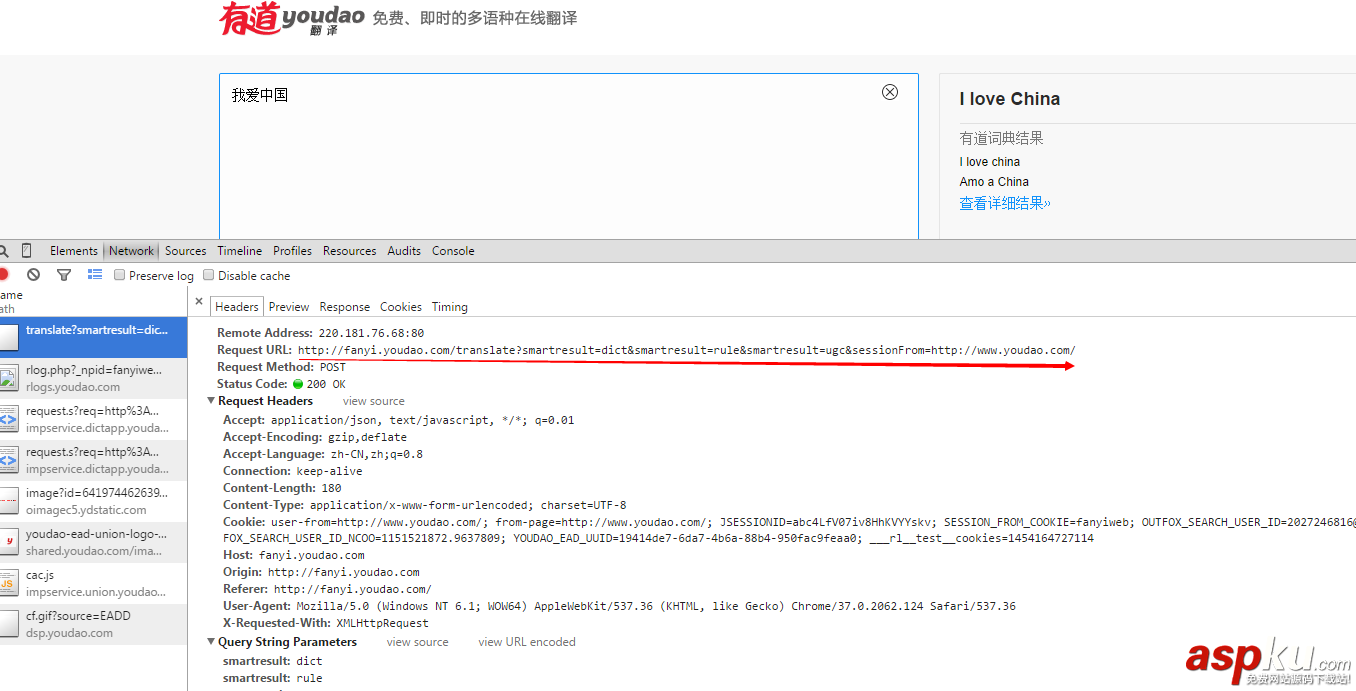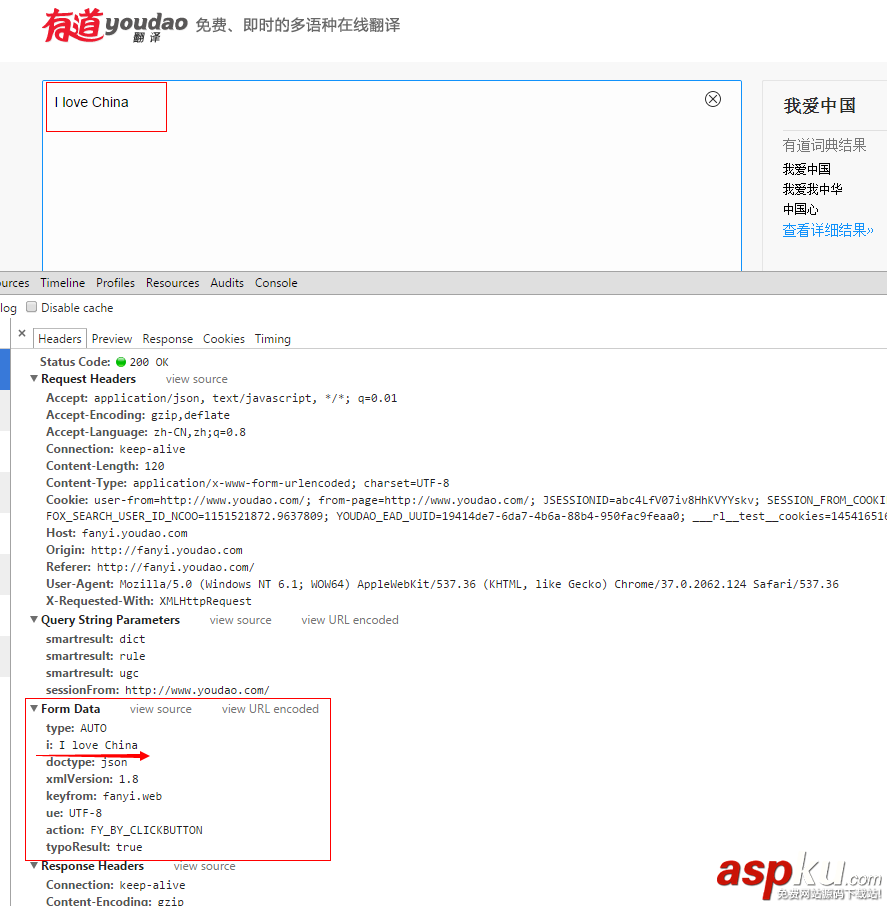实例如下:
import urllib.requestimport urllib.parseimport jsonwhile True: content = input('请输入需要翻译的内容(退出输入Q):') if content == 'Q': break else: url = 'http://fanyi.youdao.com/translate?smartresult=dict&smartresult=rule&smartresult=ugc&sessionFrom=http://www.youdao.com/' data = {} data['type'] = 'AUTO' data['i'] = content data['doctype'] = 'json' data['xmlVersion'] = '1.8' data['keyfrom'] = 'fanyi.web' data['ue'] = 'UTF-8' data['action'] = 'FY_BY_CLICKBUTTON' data['typoResult'] = 'true' data = urllib.parse.urlencode(data).encode('utf-8') response = urllib.request.urlopen(url, data) html = response.read().decode('utf-8') target = json.loads(html) print('翻译的结果:%s' % target['translateResult'][0][0]['tgt'])程序执行情况:

这里要注意的是两个函数urllib.request.urlopen()与urllib.parse.urlencode()。
urllib.request.urlopen()其实不止一个参数,有好几个哦,其中第二个是data,data应该是一个buffer的标准应用程序/ x-www-form-urlencoded格式(python标准库原文:data should be a buffer in the standard application/x-www-form-urlencoded format)。urllib.parse.urlencode()函数接受一个映射或序列集合,并返回一个字符串的格式(python标准库原文:The urllib.parse.urlencode() function takes a mapping or sequence of 2-tuples and returns a string in this format)。我们可以看看urllib.parse.urlencode()的结果是什么样的:

上图的结果刚好与urllib.request.urlopen()的data参数的数据类型要求一致了。
注意,上面urlopen当中的url,这个是分析有道翻译页面的真实的Request URL:


以上这篇python利用有道翻译实现"语言翻译器"的功能实例就是小编分享给大家的全部内容了,希望能给大家一个参考,也希望大家多多支持VEVB武林网。
新闻热点
疑难解答